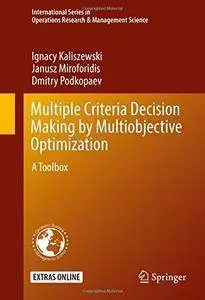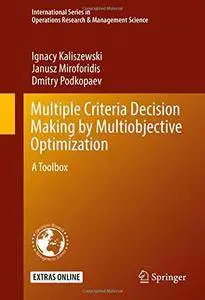Author, "Multiple Criteria Decision Making by Multiobjective Optimization: A Toolbox"
English | 29 Aug. 2016 | ISBN: 3319327550 | 142 Pages | PDF (True) | 1.34 MB
English | 29 Aug. 2016 | ISBN: 3319327550 | 142 Pages | PDF (True) | 1.34 MB
This textbook approaches optimization from a multi-aspect, multi-criteria perspective. By using a Multiple Criteria Decision Making (MCDM) approach, it avoids the limits and oversimplifications that can come with optimization models with one criterion. The book is presented in a concise form, addressing how to solve decision problems in sequences of intelligence, modelling, choice and review phases, often iterated, to identify the most preferred decision variant. The approach taken is human-centric, with the user taking the final decision is a sole and sovereign actor in the decision making process. To ensure generality, no assumption about the Decision Maker preferences or behavior is made. The presentation of these concepts is illustrated by numerous examples, figures, and problems to be solved with the help of downloadable spreadsheets. This electronic companion contains models of problems to be solved built in Excel spreadsheet files.
Optimization models are too often oversimplifications of decision problems met in practice. For instance, modeling company performance by an optimization model in which the criterion function is short-term profit to be maximized, does not fully reflect the essence of business management. The company’s managing staff is accountable not only for operational decisions, but also for actions which shall result in the company ability to generate a decent profit in the future. This calls for management decisions and actions which ensure short-term profitability, but also maintaining long-term relations with clients, introducing innovative products, financing long-term investments, etc. Each of those additional, though indispensable actions and their effects can be modeled separately, case by case, by an optimization model with a criterion function adequately selected. However, in each case the same set of constraints represents the range of company admissible actions. The aim and the scope of this textbook is to present methodologies and methods enabling modeling of such actions jointly.



